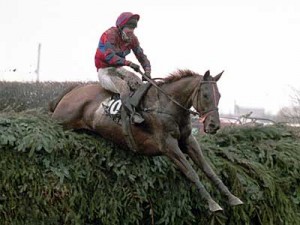Here’s the unexpurgated version of yesterday’s story in the Sunday Times Food Weekly on bubblies for breakfast. Red Marauder may have been the slowest horse in 118 years to win the Grand National when he romped home in 2001. But his owner was so chuffed, the following morning a Champagne breakfast was served to the victor in his stall. So what Champagne do you serve a horse for breakfast? Or indeed a friend who wears open sandals with socks and eats raw oats in the form of Bircher Müsli from an unglazed bowl, rather than a morral (the pretentious name for a feedbag)?
Presumably a rosé bubbly for a horse called Red. Or perhaps even a sparkling red, like the funky Cape Jazz Shiraz from Franschhoek’s most exciting producer, Solms-Delta. Which has the added benefit of being an abstemious 9% alcohol. For current liquor legislation is not too clear on rules for serving alcohol to animals. But then who will tell an elephant it’s against the law to get drunk on marula berries? Certainly not the people who make Amarula, that cream liqueur made from marula fruit that is the only way to drink airline coffee on a redeye flight with rehydrated eggs.
French Champagne is really the only acceptable bubbly to serve at a Champagne breakfast. And with the Consumer Protection Act now in full force, it’s also probably the only fizz that can legally be served. Méthode Cap Classique is the local equivalent, which would convert a Champagne breakfast into a Méthode Cap Classique petit déjeuner. Quite a mouthful, but a repast so grand, it would even pass in Franschhoek.
Breakfasting on the wrong side of the tracks, Nederburg Cuvee Brut is well matched with a greasy fry-up. Made via a carbonation process that forces bubbles of CO2 into the wine rather than by secondary fermentation in bottle, it costs under R50. Sparkling Chenin Blanc, the fresh flavours of apricot and apple are liquid chutney for bubble and squeak.
In a South African context, the MCC for a Durban July winner has to be something from Robertson. The valley of wine, roses and Pocket Power, born on Zandvliet. Owned by brothers Paul and Dan De Wet, the farm is so famous for Shiraz, they don’t bother making any bubbly. Although sparkling Shiraz is a serious drink Down Under (try the Rockford) and in Franschhoek.
They probably go to their distant kinsman, Peter De Wet at De Wetshof, for a case or three of his yeasty 60:40 blend of Chardonnay and Pinot Noir. Peter’s dad Danie is South Africa’s Mr. Chardonnay who credits the limestone content of his Robertson soils for the chalky grip of his wines. Horse breeder Dan would agree that it’s the limestone that benefits equine bones and the minerality of Robertson bubblies makes them a good foil for fried eggs.
Limestone explains why the late Graham Beck established his giant fizz fabriek just outside town. Although he channelled most of his equine energy into a stud in Kentucky, a state more famous for Bourbon than bubbly. But Bourbon with breakfast was always best left to Hunter S. Thompson.
A farm that knows a lot about breakfast is Twee Jonge Gezellen in Tulbagh as they harvest their grapes at night. A bottle of their stellar Krone Borealis 2008 is a great way to end off a nightshift with a breakfast of brioche filled with grated cheddar and ouma’s homemade jam.
For something different, try the Bramon sparkling Sauvignon Blanc. It is made from grapes grown in the Crags outside Plettenberg Bay by Anton Smal, who learnt his trade at Stellenbosch sparkling superstars Villiera. SA plutocrats can now nibble on their rolls, ham and Emmental cheese with a glass of locavore bubbles in a crystal flute. Minimizing their carbon footprints in a most elegant way.




